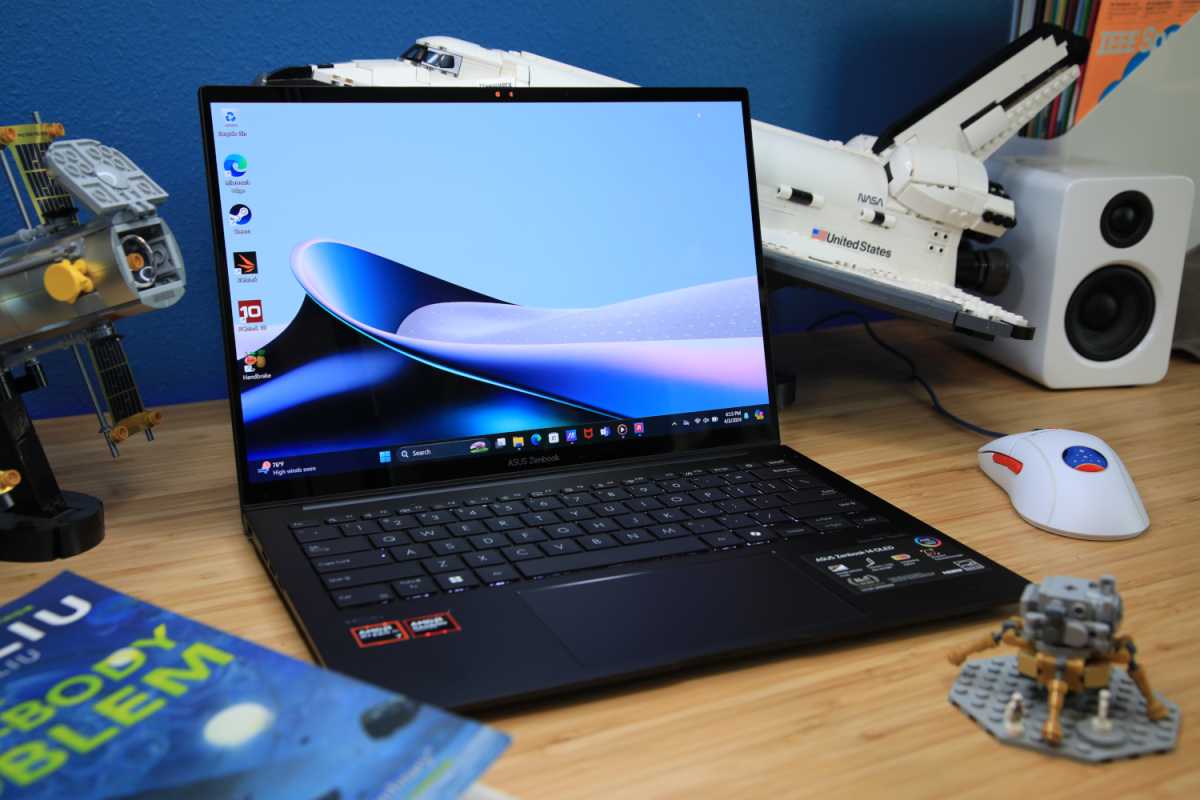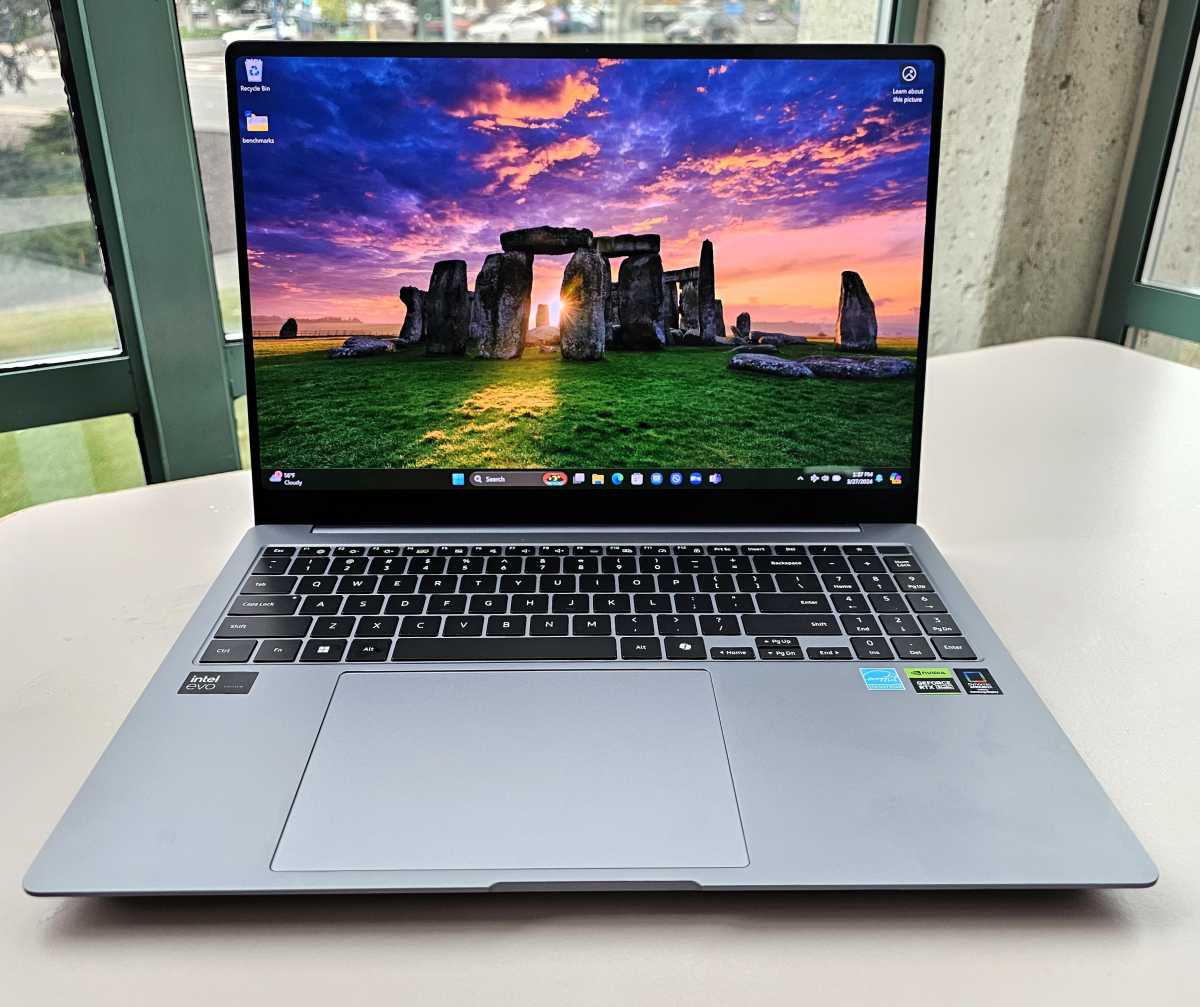OLED laptops: The good, the bad, the ugly
Once upon a time, OLED displays were prohibitively expensive. Nowadays, you can pick up a laptop with an OLED display for under $1,000. But are they really worth it? The answer might be more complicated than you think. An OLED laptop may be worth it for some, but not others.
OLED displays are great for entertainment and gaming because they produce rich colors and deep blacks. That said, they’re suseptible to the dreaded burn-in, a visible impression on the screen that you can’t get rid of. They’re also a serious power suck as far as battery life is concerned. Read on to learn more.
Further reading: The best laptops we’ve tested
What the heck is OLED anyway?Let’s take it back to square one, shall we? OLED stands for Organic Light Emitting Diode. The tech produces a delightfully vibrant picture because there’s no need for a separate backlight like there is with LCD (liquid crystal display) displays. OLED screens are capable of adjusting the brightness on a pixel-by-pixel basis, leading to inky blacks and enriching colors. This makes OLED a good choice for gamers, graphic designers, movie buffs, and so on.
check out our top 2-in-1 laptop Asus Zenbook 14 Flip OLED
 Read our review
Price When Reviewed:
1199.99
Best Prices Today:
$999.99 at Asus |
$1,199 at Amazon |
$1199.99 at Best Buy
The pros
Read our review
Price When Reviewed:
1199.99
Best Prices Today:
$999.99 at Asus |
$1,199 at Amazon |
$1199.99 at Best Buy
The pros
Below you’ll find all the benefits of an OLED laptop display.
Immersive entertainmentIf your eyeballs aren’t glued to the screen, are you really that immersed? Kidding… mostly. Laptops with OLED displays make great gaming machines because they show almost the full coverage of the DCI-P3 color scale. This results in a very color-accurate display. Think of it like an artist with an easel of supercharged paints. The color palette is bigger and therefore more interesting to look at. Now, apply that to the most epic fantasy game you can think of (maybe it’s riding Roach through the enriching world in The Witcher) and voilà! You’ve got quite the immersive experience. It’s also a great choice if you’re a big movie or TV buff, especially if you’re watching a colorful anime like Sailor Moon, which has a lot of pinkish hues in its scenes.
Lighter laptopThe OLED display panel is incredibly thin, which decreases the weight of the overall laptop. This is because they don’t need a backlight. LCD panels, for example, need a separate backlight that lights up the liquid crystals inside. According to Lenovo, LCD is “a layer of liquid crystals sandwiched between two transparent electrodes.” This additional layer adds more weight to the laptop. So, if you’re the type of person who frequently moves from room to room (hi!), then you’ll want to look into a laptop with an OLED display. In addition to making the laptop more portable, the viewing angles on OLED are also wider than the LCD variety.


IDG / Matthew Smith

IDG / Matthew Smith
IDG / Matthew Smith
Touch-enabled screensDo you like to randomly doodle a picture of Sailor Moon as a way to impress your friends? I sure do. If so, good news! There are a number of OLED laptops that offer touchscreen functionality, allowing you to doodle away with your fingers or a stylus. Jokes aside, if you’re a graphic designer or a budding artist, the deep blacks and rich colors will serve as a benefit to you in your work. Note takers should take note (ha) here, too: You should always make sure you can configure your chosen OLED laptop with a touchscreen.
The consAh, we’ve made it to the burn, I mean con list. Below you’ll find a list of common deterrents to OLED such as burn-in, a loftier price point, and so on.
Burn-inBurn-in is when part of a static image (like a taskbar or a gaming HUD) gets “burned” into the screen in a permanent way. It will hang around as a ghostly background or outline even if the screen is showing other content. This happens when the same image gets displayed over and over again with little variation at a high brightness.
Here’s a deeper explanation of burn-in: OLED pixels, which consist of organic materials that shoot out light when an electric current passes through them, will degrade when exposed to high electric currents for a prolonged period of time. A higher brightness setting, which uses more power and generates more heat, will wear out some of the pixels, which then leads to a ghostly image.
Image retention is often a precursor to burn-in, so if you’re seeing an outline of a taskbar sticking around for a few minutes and then fading away, you should start lowering the brightness level or use a screen saver to switch up what’s being displayed on the screen. Although burn-in is rare, it doesn’t hurt to take some precautions!
PriceWhen it comes to buying an OLED laptop, the prices can really vary. They used to be prohibitively expensive back in the day, but that’s not really the case anymore. For example, the Asus Zenbook 14 OLED, which we reviewed back in April, earned 4.5 stars plus an Editor’s Choice badge from us and it only costs $799 at Walmart at the time of this writing. Not only do “movies and games look realistic and vibrant,” but it also lasted 16 hours on a single charge, a typically difficult feat for a laptop with an OLED display. They’re not the cheapest option out there, but they’re definitely not the most expensive, either.


Mark Hachman / IDG

Mark Hachman / IDG
Mark Hachman / IDG
BatteryThe battery may take a baseball to the face, so to speak. Again, that’s not always so, as the aforementioned Asus Zenbook 14 OLED can last up to 16 hours with light use. But a high-end machine like the more expensive HP Spectre x360 14 ($1,819.99) that we reviewed in March, which has a higher resolution OLED display (2880×1800), only lasted about 11 hours. That’s still a good result; don’t get it twisted! But you can see the difference between the two OLED displays and the amount of power they consume. You definitely should do a little research into the battery life of your chosen machine, especially if you travel often and are regularly away from an outlet.
Laptops